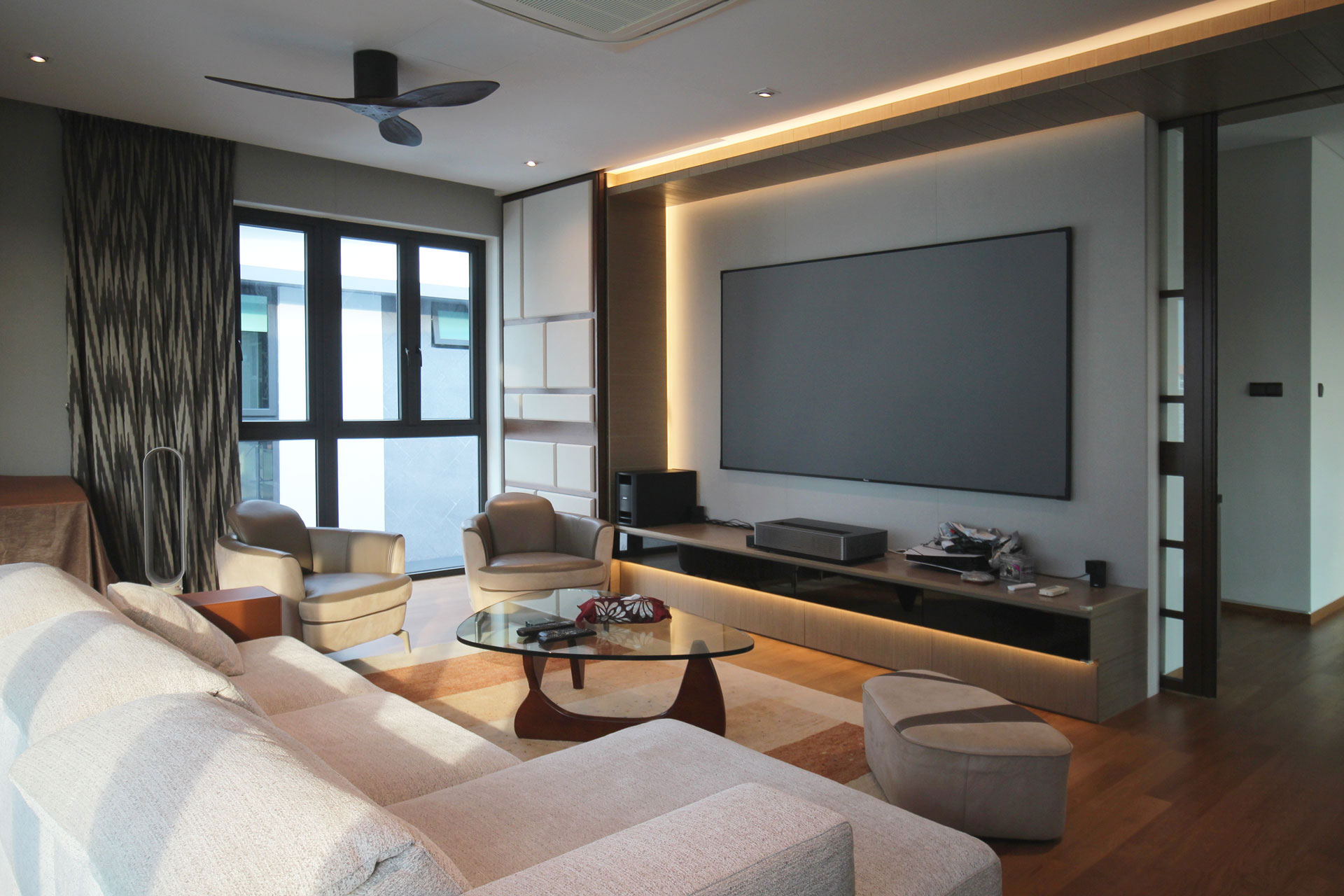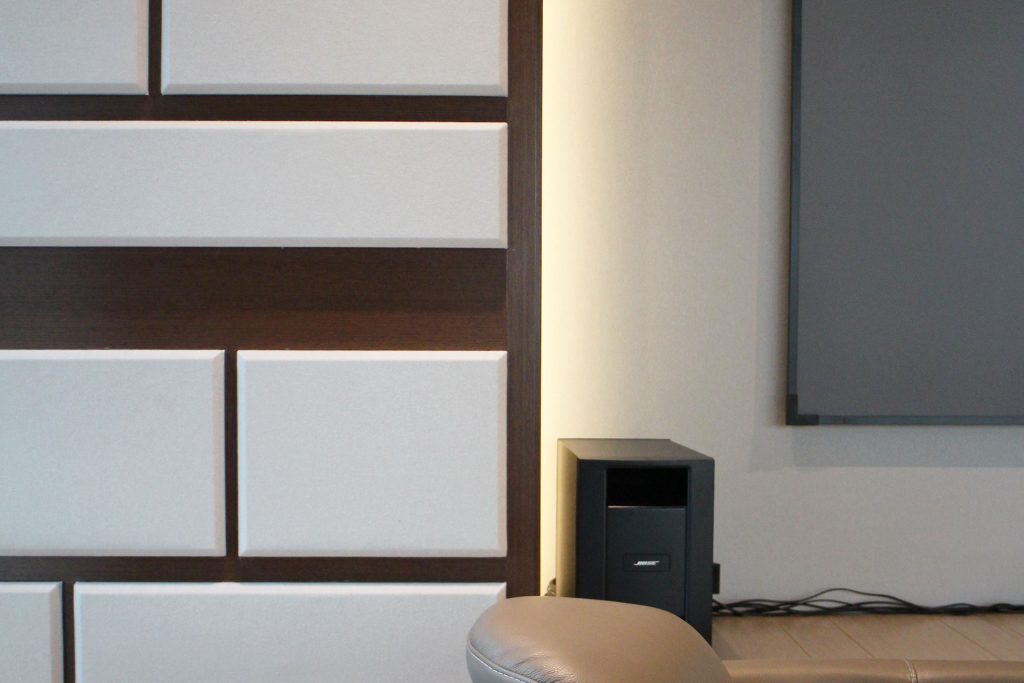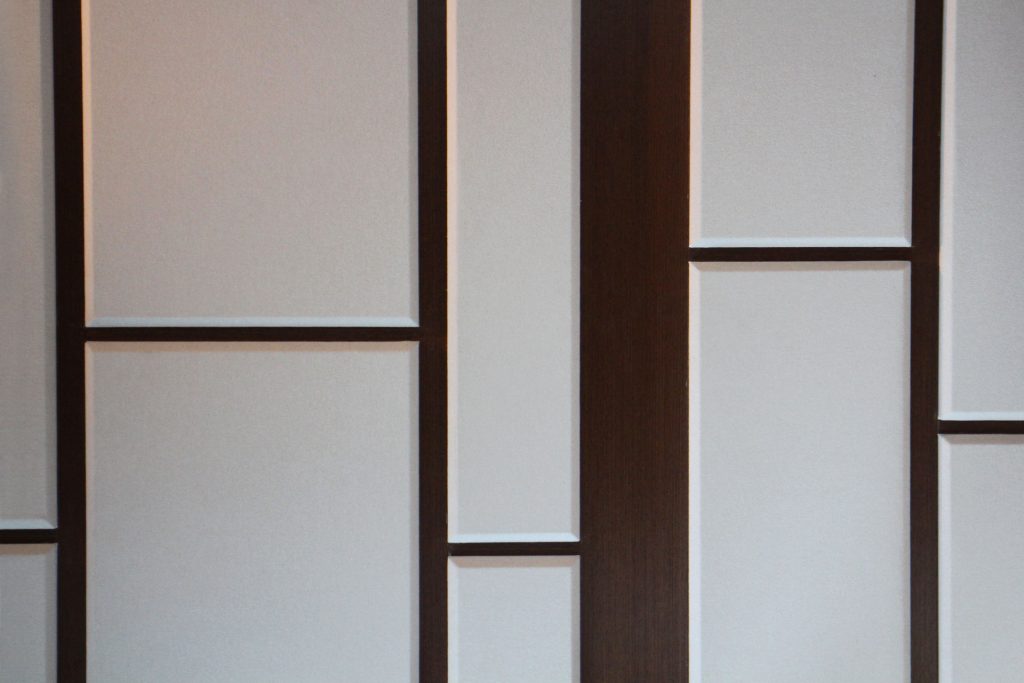
Optimising Acoustic Performance
Acoustic fabric panels play a crucial role in enhancing sound quality in home theatres by controlling sound reflections, reducing reverberation, and improving overall audio clarity. The installation of these panels helps create an immersive audio experience by ensuring that sound waves are properly absorbed and diffused within the room². This article explores the benefits, installation strategies, and materials of acoustic fabric panels specifically designed for home theatres.

Sound Reflection Control
Reducing Echo and Reverberation
In home theatres, hard surfaces such as walls, ceilings, and floors can cause sound waves to bounce around, leading to unwanted echoes and reverberations. Acoustic fabric panels effectively absorb these sound waves, minimising their reflection and reducing the time it takes for sound to decay³. This results in clearer dialogue, more defined audio effects, and an overall enhanced listening experience.
Improving Speech Intelligibility
One of the key benefits of using acoustic fabric panels in home theatres is the improvement in speech intelligibility. By absorbing excessive sound reflections, these panels ensure that spoken words are clear and distinct, preventing the muddling of dialogue which is crucial for understanding movies and shows⁴. This clarity is particularly important in scenes with complex soundscapes or rapid dialogue exchanges.

Installation Strategies
Strategic Placement
The placement of acoustic fabric panels significantly impacts their effectiveness. Panels should be strategically positioned on walls and ceilings where sound reflections are most likely to occur. Typically, this includes the first reflection points—areas on the side walls and ceiling that reflect sound from the speakers to the listener’s ears⁵. Additionally, placing panels behind the speakers and at the rear of the room can further enhance sound absorption and diffusion.
Combining with Other Acoustic Treatments
For optimal acoustic performance, acoustic fabric panels should be used in conjunction with other treatments such as bass traps and diffusers. Bass traps are designed to absorb low-frequency sound waves that acoustic panels might not effectively manage. Diffusers scatter sound waves, helping to distribute sound energy evenly throughout the room⁶. This combination creates a balanced acoustic environment, addressing both high-frequency and low-frequency issues.
Material Considerations
Choosing the Right Fabric
The choice of fabric for acoustic panels affects both their aesthetic and acoustic properties. Fabrics should be acoustically transparent, allowing sound waves to pass through to the absorptive material behind them. Popular choices include polyester, wool, and acoustic suede, which provide good sound absorption while offering a range of colors and textures to match the home theatre decor⁷.
Core Materials
The core material of the acoustic panel is responsible for absorbing sound waves. Common materials include fiberglass, mineral wool, and open-cell foam. Fiberglass and mineral wool are highly effective at absorbing a wide range of frequencies, making them suitable for home theatres. Open-cell foam, while less dense, can also be effective, particularly for high-frequency absorption⁸. The choice of core material should be based on the specific acoustic needs of the room and personal preferences.
Aesthetic Integration
Custom Designs
Acoustic fabric panels can be customised to blend seamlessly with the home theatre’s design. Panels can be wrapped in fabrics that match the room’s color scheme or feature printed designs to enhance the visual appeal. This customisation ensures that acoustic treatments do not detract from the aesthetic of the home theatre but rather complement it⁹.
Incorporating Lighting
Some acoustic fabric panels are designed to incorporate LED lighting, adding a functional and aesthetic element to the home theatre. These panels can provide ambient lighting that enhances the viewing experience without causing glare or reflections on the screen. Integrating lighting with acoustic panels offers a dual-purpose solution that enhances both sound and visual comfort¹⁰.

Future Trends in Acoustic Panels
Smart Acoustic Panels
The future of acoustic fabric panels includes the integration of smart technology. Smart panels can adjust their acoustic properties in real-time based on the sound environment, providing dynamic sound absorption and diffusion. These panels use sensors and adaptive materials to optimise the acoustic environment, offering a more tailored and efficient solution for home theatres¹¹.
Sustainable Materials
There is a growing trend towards using sustainable and eco-friendly materials in acoustic panels. Recycled fabrics and natural fibres not only provide excellent acoustic performance but also reduce the environmental impact of home theatre installations. Sustainable acoustic panels meet the dual goals of enhancing sound quality and supporting environmental sustainability¹².
References
- Arau-Puchades, H. (1999). Acoustics and absorbers: Porous materials. Journal of Sound and Vibration, 220(4), 925-938.
- Trevira CS. (2021). Trevira CS: Permanently flame retardant textiles.
- Woolmark. (2020). Wool and flame resistance.
- Fahy, F. J. (2000). Foundations of engineering acoustics. Academic Press.
- Blauert, J., & Xiang, N. (2008). Acoustics for engineers. Springer.
- Cox, T. J., & D’Antonio, P. (2009). Acoustic absorbers and diffusers: Theory, design and application. CRC Press.
- Malucelli, G., et al. (2014). Nano-coatings for flame retardancy of textiles. Progress in Organic Coatings, 77(6), 1074-1091.
- Bies, D. A., & Hansen, C. H. (2009). Engineering noise control: Theory and practice. CRC Press.
- Sriram, R., et al. (2018). Smart textiles for fire safety. Sensors and Actuators B: Chemical, 259, 1198-1204.
- GREENGUARD. (2020). Low VOC emissions.
- Higginbotham, B. (2015). Innovative acoustic panel solutions for modern office spaces. Work Design Magazine.
- Prascevic, R., et al. (2019). The role of smart technologies in acoustic panel performance. Journal of Acoustic Engineering, 12(3), 102-112.
Share